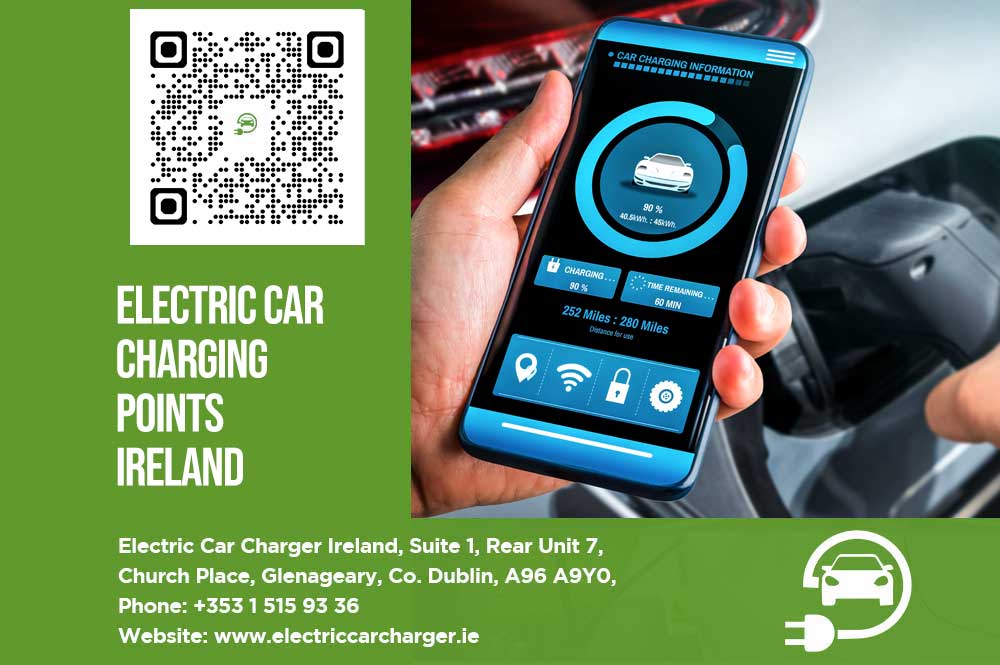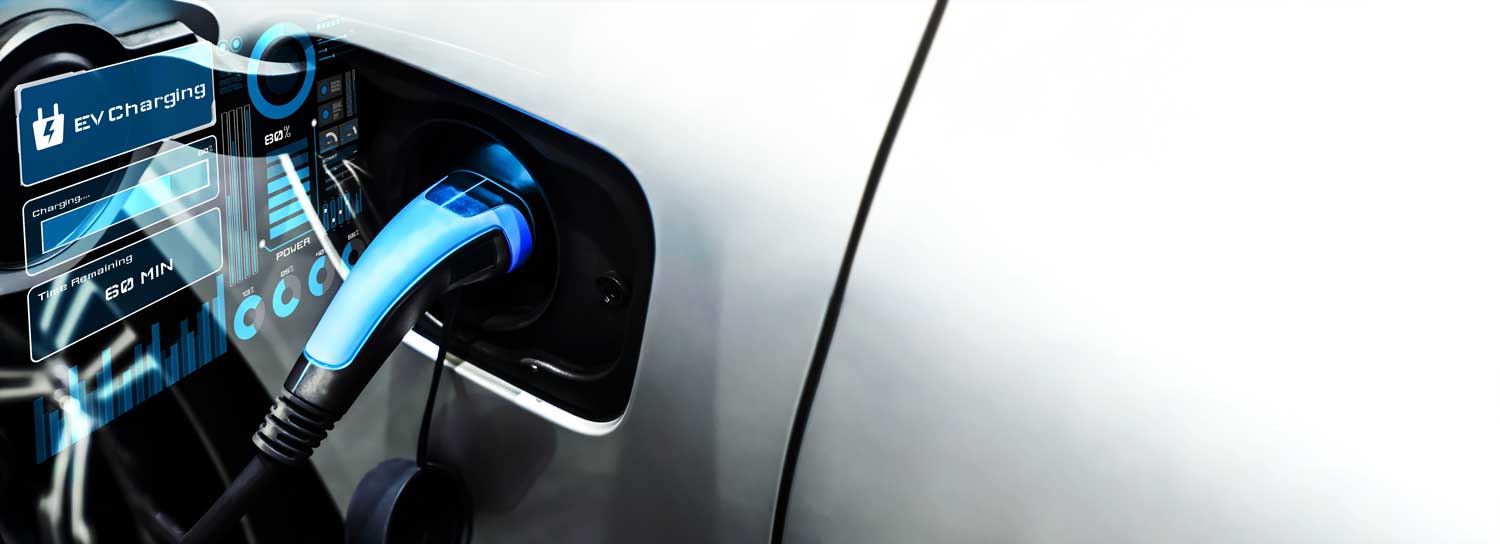Electric Car Charging Points Ireland – The total number of EVs operating in Ireland has not reached the projected levels for 2025 as specified in the Climate Action Plan, which set targets at 175,000-195,000 units. The total electric car count on Irish roads in early 2025 reached 80,000-135,000 units, which indicates Ireland cannot achieve its 2025 goals at its present adoption speed. EV sales showed a minor recovery during early 2025 after their decrease in 2024, yet official and industry experts state the country faces significant challenges to achieve its ambitious 2025 objectives. The adoption rate of EVs must increase through better solutions to present barriers, alongside effective policies that motivate buyers.
Our latest blog post delivers current information about Electric Car Charging in Ireland by discussing the national public charging network, together with methods to install domestic charging infrastructure. The article explains present-day government grants and financial incentives that assist EV accessibility. Transport accounts for 20% of Ireland’s total emissions, making vehicle electrification an essential step in meeting the country’s legally binding carbon budgets through 2030. Keep reading to discover everything you need to know to successfully make the switch to electric vehicles in Ireland today (More info on – Buying an Electric Car in Ireland ) .
Public Charging Infrastructure
Significant growth nas been seen in public charging facilities throughout Ireland, providing electric vehicle users with access to multiple charging locations while travelling (More info on – How to Use an EV Public Charger). ESB ecars operates the largest public charging network, with over 1,700 charge points nationwide, and the company plans further expansion. The public EV charging network in Ireland has been developed through ESB ecars, EasyGo, Circle K, Tesla, and several other private operators. As of 2024, the total number of public EV charging points has exceeded 2,400 across the country, though coverage remains inconsistent, especially in rural areas.
To address these gaps, the government launched the National Road EV Charging Network Plan, which aims to install high-powered charging hubs every 60km on motorways and major routes. The Transport Infrastructure Ireland (TII) EV grant scheme supports this effort by covering up to 70% of the installation costs for fast charging stations at eligible sites.
Users can locate and pay for charging services using the EasyGo and ESB e-cars apps, as well as platforms like Chargemap. Most public charging stations accept payment via RFID cards, mobile apps, and, increasingly, contactless credit or debit cards. ESB ecars also offers subscription packages for reduced charging rates.
Home Charging Options
Most EV drivers rely primarily on home charging. Your private off-street parking requires a dedicated charging unit for installing home charging facilities. Home charging systems give users the advantage of starting their day with a completely charged battery (More info on – EV Chargers Ireland). Home charging operates at a lower cost since users can take advantage of nighttime off-peak electricity rates, which cost between 8-10c per kilowatt-hour.
The installation of EV charging systems requires professional attention from qualified electricians because the system adds major electrical demands to your property. A suitable charger combination needs to match your EV model requirement,s together with your home electrical supply and daily power needs. Smart chargers represent a preferred selection among consumers because they enable mobile applications to handle charging schedules and power output settings while tracking both energy expenditure and billing data.
Homeowners who install approved EV charging units through registered electrical contractors can qualify for a €300 grant from the government as part of their EV Home Charger Grant. The EV Home Charger Grant is available only for off-street parking areas that belong to residences.
Financial Incentives for EVs
The Irish government implements different financial incentives and tax benefits to enhance EV affordability:
The SEAI provides grants up to €5,000 for new electric cars that meet qualification requirements.
New electric car owners can claim up to €5,000 VRT relief through the application of the car’s open market selling price.
EVs pay an annual motor tax of €120 while certain petrol and diesel SUVs face rates exceeding €2,000.
The BIK company car tax reduction for EV business drivers reaches up to €5,000. The incentives have been criticised for being insufficient to drive EV adoption to the extent of cheaper petrol/diesel models. Due to high upfront costs, consumer groups have urged the SEAI to restore the grant to €5,000 from its current level. More incentives for used EV imports could help accelerate the market adoption.
Charging Your EV
The good news is that modern EVs have ranges between 250-500km. Most daily commutes are less than 60km round trip and one overnight charge gives most people enough range for daily driving. However, for longer trips, you’ll need to plan charging stops into your route. The Chargemap app is very useful for locating charging points on the route and showing charge status and availability.
It is best not to fully drain the battery. Manufacturers advise against charging your battery daily to 100% as this reduces the lifespan of the battery. The dashboard and infotainment systems will display the charge level as well as the estimated range and charging time,which will help you understand how much you have used.
Switching to an Electric Car: What You Need to Know
There is no way the Irish government will reach the 2025 targets for electric vehicle sales if there is no way to encourage more people to switch to electric vehicles. For many people, the concept of switching from petrol or diesel to an electric car seems quite challenging. Here’s what to consider when making the switch:
Home Charging
Before buying an EV, it is best to install a home charger (More info on – EV Charger Installers). It makes it possible for you to charge your car while you are sleeping. You should get an electrician to test your electrical supply, since a standard outlet will charge your car slowly, and you should consider installing a higher-powered dedicated unit. The grant from SEAI will pay €300 of the costs.
Public Charging
Range anxiety is caused by the shortage of public charging facilities. The network is expanding rapidly, but it is not yet evenly spread across the country. Using Chargemap, you can find charging points, but you still need to plan your charging stops in advance for longer journeys. Add some extra time into your schedule for charging. Bring a spare charging cable with you.
Battery Care
To get the most out of your EV battery, you will have to get into new ways of doing things. Keep daily charges to 80-90%. It is bad to completely drain the battery; keep it at 10-20%. If you are going on a long journey, charge it to 100% but otherwise, try to avoid charging it to 100%. If possible, park indoors and if your car is plugged in, try to preheat or cool it as this will prevent battery drain.
Charge Planning
Using a smart charger or an EV app, program the charging times to take advantage of the cheaper rates during the night. If you are planning to go for a longer drive, try to identify the charging points that you can use for more than an hour to reduce the time spent charging. However, if you are just driving your car for the day, even 30-60 minutes of charging at night will be sufficient to give you enough range.
Acceleration and Regenerative Braking
Do not over-speed, as this will decrease the range of the vehicle. Also, it is important to use the paddles or the strongest setting to maximise the regenerative braking to recapture as much energy as possible. Drive conservatively as you adjust.
Cabin Preconditioning
Remote climate control is available on EVs, use it to preheat or cool your car when it is charging. This helps to preserve the battery power for use. You can do it in advance through an app. Don’t let the cabin conditioning run when you are driving.
Energy Tariffs
Suppliers offer Time-Of-Use or EV-specific energy tariffs that enable customers to charge their cars at cheaper rates during off-peak hours. The low off-peak prices of 8-10 cents per kWh charge make charging your vehicle much cheaper than petrol or diesel.
Test Drives
For those who are new to electric vehicles, it is important to test-drive different models. It shows the actual range of the vehicle, the charging pattern of the vehicle and the usability of the vehicle in real life. Do not depend only on the specifications; try it out before you purchase it. Test drives are readily available at dealerships.
Once you start adapting to charging and range, you might be surprised to find that electric vehicles are quite a practical and cost-effective mode of transport. The process of learning does take some time but it becomes as easy as second nature. The first step is to install home charging and try an EV and you might not need to pump gas again.
The Rollout of EVs – What’s Next?
Ireland’s EV adoption goals for 2025 remain out of reach despite predictions that public infrastructure growth and market arrivals and changing consumer perspectives will propel forward EV adoption. The electrification of transport requires ongoing attention from both public policy makers and vehicle buyers due to Ireland’s legally binding carbon budget requirements.
Ever wondered about getting the Best Home EV Charger Ireland?…..Check out our latest blog post for details.



